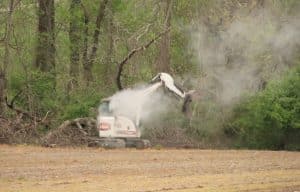‘Is farming worth it?’
By TAMMIE SLOUP
FarmWeek
For fourth generation rice, corn and soybean farmer Jennifer James, last year was her family’s most financially difficult year.
The Arkansas farmer is even more worried about what’s going to come.
“Just last week, we had one of the most difficult business conversations my family has had. Is farming really worth it?” James told U.S. Senate Ag Committee members as her voice trembled. “What scares me is we are only one farm family of thousands having these conversations.”
James was one of a dozen witnesses during the committee’s first in a series of hearings on the current state of America’s rural economy. Representatives from numerous commodity and ag groups testified Feb. 5 for nearly four hours, reiterating that coupled with ongoing challenges involving high input prices, low commodity prices and lack of a new farm bill, new barriers are coming into focus – including the potential risk of tariffs.
While thankful for the $31 billion in economic and disaster aid approved late last year by Congress for farmers, the witnesses agreed farmers need long-term stability of a new farm bill rather than ad hoc assistance.
USDA’s latest forecast for net farm income shows an increase in 2025, however, that bump is driven by higher government payments this year.
Released on Feb. 6, the Economic Research Service’s report forecasts government farm payments at $42.4 billion for 2025 – an increase of $33.1 billion from 2024.
Net farm income, a broad measure of profits, is forecast to increase in 2025 after declining in 2023 and 2024 from a record high in 2022. Forecast at $180.1 billion for 2025, net farm income would be $41 billion (29.5 percent) higher than in 2024. Net cash farm income is forecast at $193.7 billion for 2025, an increase of $34.5 billion (21.7 percent) relative to 2024 (not adjusted for inflation).
In inflation-adjusted 2025 dollars, net farm income is forecast to increase by $37.7 billion (26.4 percent) from 2024 to 2025, and net cash farm income is forecast to increase by $30.6 billion (18.8 percent) compared with the previous year.
While government payments are expected to grow, farm cash receipts are forecast to decrease by $1.8 billion from 2024 to $515 billion in 2025 in nominal dollars. Total crop receipts are forecast to decrease by $5.6 billion from 2024 levels to $239.6 billion following lower receipts for soybeans and corn.
Conversely, total animal/animal product receipts are projected to increase by $3.8 billion to $275.4 billion in 2025.
In good news, total production expenses – including those associated with operator dwellings – are forecast to decrease by $2.5 billion from 2024 to $450.4 billion in 2025. Spending on feed is expected to see the largest decline in 2025 while livestock/poultry purchases are expected to see the largest increase relative to 2024.
During committee testimony, ag leaders noted that a growing number of farmers are struggling to obtain operating loans for the 2025 planting season, and some producers likely won’t qualify for those loans.
National Corn Growers Association President Kenneth Hartman Jr. of Waterloo said corn farmers are facing losses of more than $160 per acre for the 2025 crop year, which puts them in a “vulnerable financial position.”
“Looking ahead, corn growers across the country still face economic headwinds and further action is needed to improve the farm bill safety net programs and the market outlook for producers,” Hartman said in his testimony.
American Soybean Association Chairman Josh Gackle pointed to the shifts in supply and demand as underpinning uncertainty by soybean farmers.
Even with the U.S.’s abundant soy harvest this crop year, Brazil is anticipating a record harvest and Argentina is looking at its largest harvest in years. Strong harvest predictions across the largest global soy producers will likely result in a world-record soy harvest this year, Gackle noted in his testimony.
At the same time, the world’s largest buyer of soybeans — China — continues to face economic woes and increasingly is shifting purchases toward Brazil amid tariff uncertainty.
“This economic downturn results in a diminished demand for U.S. soy at a time of excess supplies,” he said.
Both committee leaders appeared in tune with the witnesses’ concerns.
“My highest priority for the next farm bill is to improve the farm safety net, whereby every farmer in every region will have access to modernized risk management tools, regardless of the commodity that they grow,” said Committee Chairman John Boozman (R-Arkansas). “If we fail to modernize the safety net, agriculture will see further consolidation as farm families leave the business and the ripple effects to our country will be truly profound.”
Ranking member Amy Klobuchar (D-Minnesota) recognized bipartisan agreements on many farm bill priorities, but said there’s still work to do.
“There’s changes we need to make from the last farm bill to make it even better, and our committee has an opportunity at a time when we’ve got high input costs, where we’ve got avian flu, we have an opportunity to pass a bipartisan farm bill and deliver that certainty,” she said.
Both the Senate and House ag committees are gearing up for renewed farm bill talks by holding hearings on the farm economy to gauge current conditions as well as educate new committee members.
The House Ag Committee held its first hearing on Feb. 11.
This story was distributed through a cooperative project between the Illinois Farm Bureau and Illinois Press Association. For more food and farming news, visit FarmWeekNow.com.






